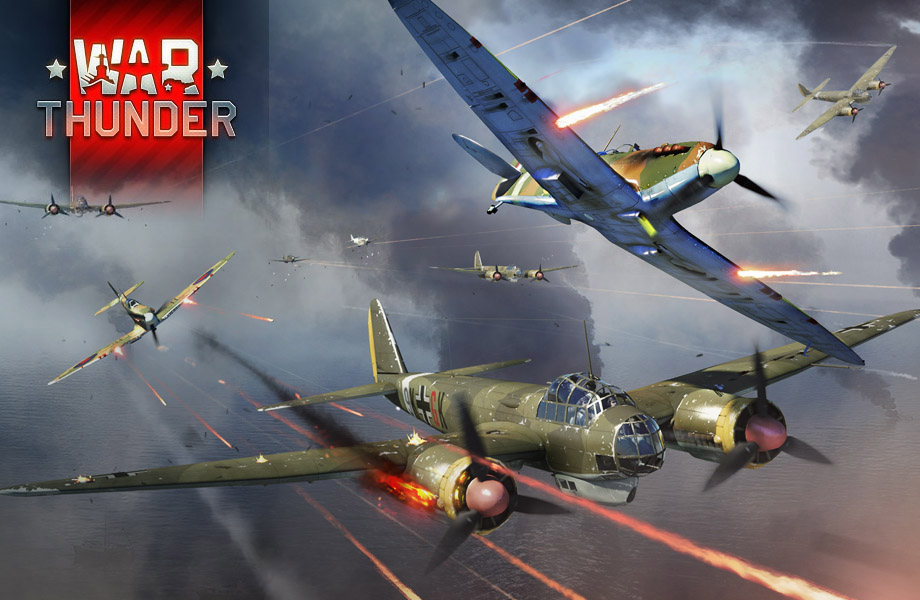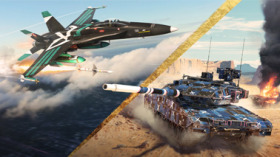
- For PC
- For MAC
- For Linux
- OS: Windows 10 (64 bit)
- Processor: Dual-Core 2.2 GHz
- Memory: 4GB
- Video Card: DirectX 11 level video card: AMD Radeon 77XX / NVIDIA GeForce GTX 660. The minimum supported resolution for the game is 720p.
- Network: Broadband Internet connection
- Hard Drive: 22.1 GB (Minimal client)
- OS: Windows 10/11 (64 bit)
- Processor: Intel Core i5 or Ryzen 5 3600 and better
- Memory: 16 GB and more
- Video Card: DirectX 11 level video card or higher and drivers: Nvidia GeForce 1060 and higher, Radeon RX 570 and higher
- Network: Broadband Internet connection
- Hard Drive: 62.2 GB (Full client)
- OS: Mac OS Big Sur 11.0 or newer
- Processor: Core i5, minimum 2.2GHz (Intel Xeon is not supported)
- Memory: 6 GB
- Video Card: Intel Iris Pro 5200 (Mac), or analog from AMD/Nvidia for Mac. Minimum supported resolution for the game is 720p with Metal support.
- Network: Broadband Internet connection
- Hard Drive: 22.1 GB (Minimal client)
- OS: Mac OS Big Sur 11.0 or newer
- Processor: Core i7 (Intel Xeon is not supported)
- Memory: 8 GB
- Video Card: Radeon Vega II or higher with Metal support.
- Network: Broadband Internet connection
- Hard Drive: 62.2 GB (Full client)
- OS: Most modern 64bit Linux distributions
- Processor: Dual-Core 2.4 GHz
- Memory: 4 GB
- Video Card: NVIDIA 660 with latest proprietary drivers (not older than 6 months) / similar AMD with latest proprietary drivers (not older than 6 months; the minimum supported resolution for the game is 720p) with Vulkan support.
- Network: Broadband Internet connection
- Hard Drive: 22.1 GB (Minimal client)
- OS: Ubuntu 20.04 64bit
- Processor: Intel Core i7
- Memory: 16 GB
- Video Card: NVIDIA 1060 with latest proprietary drivers (not older than 6 months) / similar AMD (Radeon RX 570) with latest proprietary drivers (not older than 6 months) with Vulkan support.
- Network: Broadband Internet connection
- Hard Drive: 62.2 GB (Full client)

From 20th May 2014 at 15:00 GMT till 21st May 2014 at 15:00 GMT
Whilst flying any Spitfire, destroy 60/20/6 Enemy aircraft. (Arcade, Realistic or Simulator)
Earn Up to 100,000 Silver Lions.

If asked to name an aircraft of the Second World War, the first name which will come to mind for many will be the legendary Spitfire. Captain Eric Brown RN, world record holding test pilot and CO of the allies ‘Enemy Flight’ trials unit, named the Spitfire as the best piston engine fighter of the Second World War, of any nation. This decision came after extensive testing and simulated dogfights between fighters from both sides of the conflict. Tragically, the engineering genius who was responsible for this iconic aircraft would not live long enough to see the success of his final masterpiece.
Reginald Joseph Mitchell was born in Staffordshire, England on May 20th 1895. The son of a school teacher, Mitchell won a scholarship to a High School before leaving education at the age of 16 to become an apprentice engineer in the locomotive industry. His natural ability marked him out from his peers; as his experience grew he backed this up with further education in engineering, mechanics and mathematics at night school. At the age of 21 he was offered a job with the Supermarine Aviation Works, a company reputed for its maritime aircraft.
By 1919 Mitchell was the company’s chief designer. For the next decade and a half Mitchell was involved in the design of a vast array of aircraft, as wide ranging as fighters and bombers to the famous Supermarine Walrus which remained in service until near the end of the Second World War. However, it would be in the field of racing that Mitchell’s genius would sow the seed for his most famous creation. The Air Ministry commissioned Supermarine to design racing seaplanes for the High Speed Flight team, and in 1927 the Supermarine S5 won the world famous Schneider Trophy. This feat was repeated in 1928 by the Supermarine S6. In 1931 when Mitchell’s Supermarine S6B won the Schneider Trophy again, it conferred the right for Britain to keep the trophy permanently.

Working on the experience gained by working on the high speed racing aircraft which saw victory in the Schneider Trophy, Mitchell and his team were now ideally placed to respond to the Air Ministry’s call for a new fighter to equip the RAF. Mitchell’s 1932 Type 224 design proved inferior to the competition but Mitchell persevered, building on his experience to work on the new, all metal Type 300. However, Mitchell had by this stage been diagnosed with cancer and his health began to deteriorate.
Mitchell ignored all medical advice and doubled his efforts, desperate to provide Britain with the fighter aircraft he believed was needed. By 1937 his health had deteriorated to the point of forcing him to abandon his work, but in the last few months of his life he continued to attend test flights of the aircraft which was now known as the Spitfire.
In June 1937, at the age of 42, Reginald Mitchell succumbed to cancer. He was portrayed in the 1942 movie ‘The First of the Few’ by actor Leslie Howard, a depiction which drew some criticism from colleagues for depicting the no-nonsense, often blunt Mitchell in a very gentle light. Mitchell is best remembered for having given his life to provide his country with arguably the most famous aircraft in history.
The War Thunder Team



